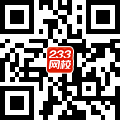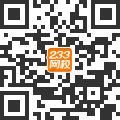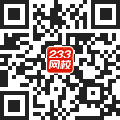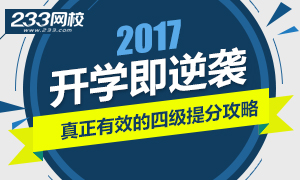歷年英語四級閱讀真題全解析(2004-2006)
- 第1頁:2004.6-Passage Two
- 第2頁:2004.6-Passage Three
- 第3頁:2004.6-PassageFour
- 第4頁:2005.1-Passage One
- 第5頁:2005.1-Passage Two
- 第6頁:2005.1-Passage Three
- 第7頁:2005.1-Passage Four
- 第8頁:2005.6-Passage 1
Passage Three
Questions 21 to 25 are based on the following passage.
Sign has become a scientific hot button. Only in the past 20 years have specialists in language study realized that signed languages are unique—a speech of the hand. They offer a new way to probe how the brain generates and understands language, and throw new light on an old scientific controversy: whether language, complete with grammar, is something that we are born with, or whether it is a learned behavior. The current interest in sign language has roots in the pioneering work of one rebel teacher at Gallaudet University in Washington, D. C., the world’s only liberal arts university for deaf people.
When Bill Stokoe went to Gallaudet to teach English, the school enrolled him in a course in signing. But Stokoe noticed something odd: among themselves, students signed differently from his classroom teacher.
Stokoe had been taught a sort of gestural code, each movement of the hands representing a word in English. At the time, American Sign Language (ASL) was thought to be no more than a form of pidgin English (混雜英語). But Stokoe believed the “hand talk” his students used looked richer. He wondered: Might deaf people actually have a genuine language? And could that language be unlike any other on Earth? It was 1955, when even deaf people dismissed their signing as “substandard”. Stokoe’s idea was academic heresy (異端邪說).
It is 37 years later. Stokoe—now devoting his time to writing and editing books and journals and to producing video materials on ASL and the deaf culture—is having lunch at a cafe near the Gallaudet campus and explaining how he started a revolution. For decades educators fought his idea that signed languages are natural languages like English, French and Japanese. They assumed language must be based on speech, the modulation (調節) of sound. But sign language is based on the movement of hands, the modulation of space. “What I said,” Stokoe explains, “is that language is not mouth stuff—it’s brain stuff.”
21. The study of sign language is thought to be ________.
A) a new way to look at the learning of language
B) a challenge to traditional views on the nature of language
C) an approach to simplifying the grammatical structure of a language
D) an attempt to clarify misunderstanding about the origin of language(C)
22. The present growing interest in sign language was stimulated by ________.
A) a famous scholar in the study of the human brain
B) a leading specialist in the study of liberal arts
C) an English teacher in a university for the deaf
D) some senior experts in American Sign Language(C)
23. According to Stokoe, sign language is ________.
A) a Substandard language
B) a genuine language
C) an artificial language
D) an international language(B)
24. Most educators objected to Stokoe’s idea because they thought ________.
A) sign language was not extensively used even by deaf people
B) sign language was too artificial to be widely accepted
C) a language should be easy to use and understand
D) a language could only exist in the form of speech sounds(D)
25. Stokoe’s argument is based on his belief that ________.
A) sign language is as efficient as any other language
B) sign language is derived from natural language
C) language is a system of meaningful codes
D) language is a product of the brain(D)
這篇文章內容核心是手語,以一位手語專家的研究歷程為線索,粗略介紹了手語研究的新觀點:手語是獨立于語音的另一種語言。材料一共四段。開頭介紹了手語研究的進展以及意義,“進展”指過去的20年研究人員發現了手語的獨特性(realized that signed languages are unique),意義是指手語的這一發現為研究大腦如何應用與理解語言開辟了新的方向(a new way to probe how the brain generates and understands language),同時為一個古老的科學論題帶來了新的希望:語言到底是天生的還是后天習得的(whether language……is something that we are born With, or whether it is a learned behavior)。之后,文章簡單介紹了這一研究發現的先驅人物,以后的內容全部都是圍繞這位先驅的研究經歷展開的。
段末介紹了這位先驅人物Stokoe的基本信息:華盛頓特區一所聾人大學的教師。第二段便從他的教學經歷講起,談到他被安排教授手語后發現了一個奇怪的現象:學生們的動作與教他的老師所講的并不一樣(students signed differently from his classroom teacher)。這就是新發現的契機。
接下來,文章先是簡單說明一下當時的手語教育狀況,以和他的新發現作為對比。首先是承接上文所說,講他從老師那里學來的手語的基本特點:每個手勢代表英語里的一個單詞(each movement of the hands representing a word in English),這可以理解為手語實際上是語言的附庸。其次是人們普遍認為美國手語不過是一種混雜英語(thought to be no more than a form of pidgin English),這里也在強調手語從屬于語言。之后是Stokoe自己的發現與思考:他認為學生們使用的手語意義比人們的普遍觀點要更為豐富(the “hand talk” his students used looked richer),同時受到了啟發:或許聾人確實擁有一種真正的語言。
上一段末一句說Stokoe的觀點在當時過于超前,被視為學術異端,后一段時空一下跳轉到了37年以后,此時的Stokoe忙于寫作、編輯、出品美國手語方面的書籍報刊和視頻(writing and editing books and journals and to producing video materials),同時饒有興致地為人講述這場“革命”是如何開始的。從這里的信息可以看出,Stokoe的觀點的地位已經是今非昔比了,否則如此多的出版物不會有市場需求,其稱呼也不會從“異端”變為“革命”。不過,反對觀點依然十分強大,這一派認為語言必須以語音為基礎,是聲音的變體(language must be based on speech, the modulation of sound),而Stokoe則反駁手語恰恰以手的動作為基礎(sign language is based on the movement of hands),譏諷道“語言不是嘴巴層次的東西,而是大腦層次的東西(brain stuff)。
21. B
題目問符號語言被認為是一種什么。
A,一種認識語言習得的新方式。
B,對語言本質傳統觀點的挑戰。
C,簡化語言語法結構的方法。
D,明晰對語言起源的誤解的嘗試。
本題旨在考查段的第三句話:They offer a new way to……or whether it is a learned behavior——這是一個長句,大意是說手語提供了一種新方式來探索大腦生成和理解語言的方式,同時也為一個古老的問題提供了新的思維,這個古老的問題是“語言是與生俱來的還是后天習得的”。
A側重于語言的學習,指如何掌握、運用語言,但原文中有關大腦如何生成語言這些內容顯然比語言學習要深奧得多。所以A的說法不夠全面。
B有一定道理,因為原文中的大腦生成和理解語言、語言是與生俱來還是后天習得等等問題應該可以看作是語言的本質問題(nature),而原文中使用了a new way(新方式)這個詞組,可以認為是對舊有方式的挑戰。
C的說法屬于無中生有,因為原文出現了complete with grammar這個詞組,所以生造出一個和語法相關的選項來迷惑考生的視線。
D把傳統觀點視為“誤解”顯得太過武斷,從原句的表達來看,手語僅僅是提供了一種新的研究方式,至于新舊觀點哪一種是誤解并沒有做出論斷。
22. C
題目問當前對符號語言日漸高漲的興趣是由誰引發的。
A,一位研究人類大腦的著名學者。
B,一位研究文科的杰出專家。
C,一位聾人大學的英語教師。
D,美國符號語言的幾位高級專家。
這道題考查的是段的后一句話。The current interest in sign language has roots in the pioneering work of one rebel teacher,這里的has roots in詞組是指“根源于”,應該和題目里的stimulated意思相近。可以看到這位先驅者是一位教師(one rebel teacher),其所在的學校是專門教育聾人的文科大學(liberal arts university for deaf people)。這位老師是教授什么科目的呢?下一段開頭給出了答案:When Bill Stokoe went to Gallaudet to teach English——科目是英語。這樣答案應該是C。
23. B
題目問在Stokoe看來,手語是一種……
A,一種不合標準的語言。
B,一種真正的語言。
C,一種人工語言。
D,一種國際語言。
倒數第二段中有一句話與本題相關:He wondered: Might deaf people actually have a genuine language?這里雖然使用了疑問句的形式,但實際上應該是Stokoe的觀點所在,根據是該段后一句話Stokoe’s idea was academic heresy——如果Stokoe沒有形成“手語是一種真正的語言”的觀點,文章又為何會說他的思想被視為異端邪說呢?
可以判斷B的說法是正確的。A的說法在文中也有出現,不過原文意思是substandard是聾人自己的想法,而非Stokoe的觀點。
24. D
題目問大多數教育家反對Stokoe的觀點,是因為他們認為……
A,手語即便是在聾人當中也沒有得到廣泛使用。
B,手語因為人工色彩太強而不能被廣泛接受。
C,一種語言應該易于使用和理解。
D,語言只能存在于語音的形式下。
題目里的關鍵信息是educators,這個單詞出現在材料的后一段中間部分:For decades educators fought his idea that signed languages are natural languages like English, French and Japanese. They assumed language must be based on speech, the modulation of sound.
句意思是教育家們反對手語和英語、法語、日語一樣屬于自然語言,第二句指明了教育家們自己的觀點:語言必須基于語言。Be based on是“以……為基礎”的意思,意義等同于D所說的only exist,這樣D的說法就和原文一致,是正確答案。
A、B、C三個說法在文中都找不到著落點,可以很容易地排除。
25. D
題目問Stokoe的論點基于他的什么想法。
A,手語和其他語言的效用一樣。
B,手語由自然語言發展而來。
C,語言是一種有意義的符號系統。
D,語言是大腦的產物。
首先需要明確這里所問的Stokoe的論點是什么,落腳點在文章的什么地方。鑒于本題是后一題,考查材料后部分的可能性很大,所以應該先觀察文末。
可以發現But sign language is based on the movement of hands, the modulation of space這一句。該句意思上和前面教育家們的觀點恰好相反,應該就是Stokoe的論點。那么他的這一論點基于何處,答案也應該在后一段尋找。后文引用了Stokoe的原話,提到language is not mouth stuff—it’s brain stuff,大體意思是語言不是嘴上的東西,而是腦子的東西,極有可能就是答案所在。觀察四個選項,D的說法和it’s brain stuff意義基本一致,可以判斷D就是正確答案。再觀察其他三個選項,在文章關于Stokoe的敘述中都沒有提到過,可以排除。
Questions 21 to 25 are based on the following passage.
Sign has become a scientific hot button. Only in the past 20 years have specialists in language study realized that signed languages are unique—a speech of the hand. They offer a new way to probe how the brain generates and understands language, and throw new light on an old scientific controversy: whether language, complete with grammar, is something that we are born with, or whether it is a learned behavior. The current interest in sign language has roots in the pioneering work of one rebel teacher at Gallaudet University in Washington, D. C., the world’s only liberal arts university for deaf people.
When Bill Stokoe went to Gallaudet to teach English, the school enrolled him in a course in signing. But Stokoe noticed something odd: among themselves, students signed differently from his classroom teacher.
Stokoe had been taught a sort of gestural code, each movement of the hands representing a word in English. At the time, American Sign Language (ASL) was thought to be no more than a form of pidgin English (混雜英語). But Stokoe believed the “hand talk” his students used looked richer. He wondered: Might deaf people actually have a genuine language? And could that language be unlike any other on Earth? It was 1955, when even deaf people dismissed their signing as “substandard”. Stokoe’s idea was academic heresy (異端邪說).
It is 37 years later. Stokoe—now devoting his time to writing and editing books and journals and to producing video materials on ASL and the deaf culture—is having lunch at a cafe near the Gallaudet campus and explaining how he started a revolution. For decades educators fought his idea that signed languages are natural languages like English, French and Japanese. They assumed language must be based on speech, the modulation (調節) of sound. But sign language is based on the movement of hands, the modulation of space. “What I said,” Stokoe explains, “is that language is not mouth stuff—it’s brain stuff.”
21. The study of sign language is thought to be ________.
A) a new way to look at the learning of language
B) a challenge to traditional views on the nature of language
C) an approach to simplifying the grammatical structure of a language
D) an attempt to clarify misunderstanding about the origin of language(C)
22. The present growing interest in sign language was stimulated by ________.
A) a famous scholar in the study of the human brain
B) a leading specialist in the study of liberal arts
C) an English teacher in a university for the deaf
D) some senior experts in American Sign Language(C)
23. According to Stokoe, sign language is ________.
A) a Substandard language
B) a genuine language
C) an artificial language
D) an international language(B)
24. Most educators objected to Stokoe’s idea because they thought ________.
A) sign language was not extensively used even by deaf people
B) sign language was too artificial to be widely accepted
C) a language should be easy to use and understand
D) a language could only exist in the form of speech sounds(D)
25. Stokoe’s argument is based on his belief that ________.
A) sign language is as efficient as any other language
B) sign language is derived from natural language
C) language is a system of meaningful codes
D) language is a product of the brain(D)
這篇文章內容核心是手語,以一位手語專家的研究歷程為線索,粗略介紹了手語研究的新觀點:手語是獨立于語音的另一種語言。材料一共四段。開頭介紹了手語研究的進展以及意義,“進展”指過去的20年研究人員發現了手語的獨特性(realized that signed languages are unique),意義是指手語的這一發現為研究大腦如何應用與理解語言開辟了新的方向(a new way to probe how the brain generates and understands language),同時為一個古老的科學論題帶來了新的希望:語言到底是天生的還是后天習得的(whether language……is something that we are born With, or whether it is a learned behavior)。之后,文章簡單介紹了這一研究發現的先驅人物,以后的內容全部都是圍繞這位先驅的研究經歷展開的。
段末介紹了這位先驅人物Stokoe的基本信息:華盛頓特區一所聾人大學的教師。第二段便從他的教學經歷講起,談到他被安排教授手語后發現了一個奇怪的現象:學生們的動作與教他的老師所講的并不一樣(students signed differently from his classroom teacher)。這就是新發現的契機。
接下來,文章先是簡單說明一下當時的手語教育狀況,以和他的新發現作為對比。首先是承接上文所說,講他從老師那里學來的手語的基本特點:每個手勢代表英語里的一個單詞(each movement of the hands representing a word in English),這可以理解為手語實際上是語言的附庸。其次是人們普遍認為美國手語不過是一種混雜英語(thought to be no more than a form of pidgin English),這里也在強調手語從屬于語言。之后是Stokoe自己的發現與思考:他認為學生們使用的手語意義比人們的普遍觀點要更為豐富(the “hand talk” his students used looked richer),同時受到了啟發:或許聾人確實擁有一種真正的語言。
上一段末一句說Stokoe的觀點在當時過于超前,被視為學術異端,后一段時空一下跳轉到了37年以后,此時的Stokoe忙于寫作、編輯、出品美國手語方面的書籍報刊和視頻(writing and editing books and journals and to producing video materials),同時饒有興致地為人講述這場“革命”是如何開始的。從這里的信息可以看出,Stokoe的觀點的地位已經是今非昔比了,否則如此多的出版物不會有市場需求,其稱呼也不會從“異端”變為“革命”。不過,反對觀點依然十分強大,這一派認為語言必須以語音為基礎,是聲音的變體(language must be based on speech, the modulation of sound),而Stokoe則反駁手語恰恰以手的動作為基礎(sign language is based on the movement of hands),譏諷道“語言不是嘴巴層次的東西,而是大腦層次的東西(brain stuff)。
21. B
題目問符號語言被認為是一種什么。
A,一種認識語言習得的新方式。
B,對語言本質傳統觀點的挑戰。
C,簡化語言語法結構的方法。
D,明晰對語言起源的誤解的嘗試。
本題旨在考查段的第三句話:They offer a new way to……or whether it is a learned behavior——這是一個長句,大意是說手語提供了一種新方式來探索大腦生成和理解語言的方式,同時也為一個古老的問題提供了新的思維,這個古老的問題是“語言是與生俱來的還是后天習得的”。
A側重于語言的學習,指如何掌握、運用語言,但原文中有關大腦如何生成語言這些內容顯然比語言學習要深奧得多。所以A的說法不夠全面。
B有一定道理,因為原文中的大腦生成和理解語言、語言是與生俱來還是后天習得等等問題應該可以看作是語言的本質問題(nature),而原文中使用了a new way(新方式)這個詞組,可以認為是對舊有方式的挑戰。
C的說法屬于無中生有,因為原文出現了complete with grammar這個詞組,所以生造出一個和語法相關的選項來迷惑考生的視線。
D把傳統觀點視為“誤解”顯得太過武斷,從原句的表達來看,手語僅僅是提供了一種新的研究方式,至于新舊觀點哪一種是誤解并沒有做出論斷。
22. C
題目問當前對符號語言日漸高漲的興趣是由誰引發的。
A,一位研究人類大腦的著名學者。
B,一位研究文科的杰出專家。
C,一位聾人大學的英語教師。
D,美國符號語言的幾位高級專家。
這道題考查的是段的后一句話。The current interest in sign language has roots in the pioneering work of one rebel teacher,這里的has roots in詞組是指“根源于”,應該和題目里的stimulated意思相近。可以看到這位先驅者是一位教師(one rebel teacher),其所在的學校是專門教育聾人的文科大學(liberal arts university for deaf people)。這位老師是教授什么科目的呢?下一段開頭給出了答案:When Bill Stokoe went to Gallaudet to teach English——科目是英語。這樣答案應該是C。
23. B
題目問在Stokoe看來,手語是一種……
A,一種不合標準的語言。
B,一種真正的語言。
C,一種人工語言。
D,一種國際語言。
倒數第二段中有一句話與本題相關:He wondered: Might deaf people actually have a genuine language?這里雖然使用了疑問句的形式,但實際上應該是Stokoe的觀點所在,根據是該段后一句話Stokoe’s idea was academic heresy——如果Stokoe沒有形成“手語是一種真正的語言”的觀點,文章又為何會說他的思想被視為異端邪說呢?
可以判斷B的說法是正確的。A的說法在文中也有出現,不過原文意思是substandard是聾人自己的想法,而非Stokoe的觀點。
24. D
題目問大多數教育家反對Stokoe的觀點,是因為他們認為……
A,手語即便是在聾人當中也沒有得到廣泛使用。
B,手語因為人工色彩太強而不能被廣泛接受。
C,一種語言應該易于使用和理解。
D,語言只能存在于語音的形式下。
題目里的關鍵信息是educators,這個單詞出現在材料的后一段中間部分:For decades educators fought his idea that signed languages are natural languages like English, French and Japanese. They assumed language must be based on speech, the modulation of sound.
句意思是教育家們反對手語和英語、法語、日語一樣屬于自然語言,第二句指明了教育家們自己的觀點:語言必須基于語言。Be based on是“以……為基礎”的意思,意義等同于D所說的only exist,這樣D的說法就和原文一致,是正確答案。
A、B、C三個說法在文中都找不到著落點,可以很容易地排除。
25. D
題目問Stokoe的論點基于他的什么想法。
A,手語和其他語言的效用一樣。
B,手語由自然語言發展而來。
C,語言是一種有意義的符號系統。
D,語言是大腦的產物。
首先需要明確這里所問的Stokoe的論點是什么,落腳點在文章的什么地方。鑒于本題是后一題,考查材料后部分的可能性很大,所以應該先觀察文末。
可以發現But sign language is based on the movement of hands, the modulation of space這一句。該句意思上和前面教育家們的觀點恰好相反,應該就是Stokoe的論點。那么他的這一論點基于何處,答案也應該在后一段尋找。后文引用了Stokoe的原話,提到language is not mouth stuff—it’s brain stuff,大體意思是語言不是嘴上的東西,而是腦子的東西,極有可能就是答案所在。觀察四個選項,D的說法和it’s brain stuff意義基本一致,可以判斷D就是正確答案。再觀察其他三個選項,在文章關于Stokoe的敘述中都沒有提到過,可以排除。
相關推薦
課程免費試聽
| ?γ??????? | ??? | ???/???? | ??????? | ???? |
|---|---|---|---|---|
| ????????????????????????????????? | ????? | ??100 / ??100 |  |
???? |
| ???????????????????????? | ????? | ??100 / ??100 |  |
???? |
| ???????????????????????? | ????? | ??100 / ??100 |  |
???? |
| ??????????????????д???? | ????? | ??100 / ??100 |  |
???? |
????0??????
????????????????







